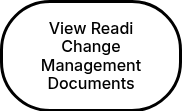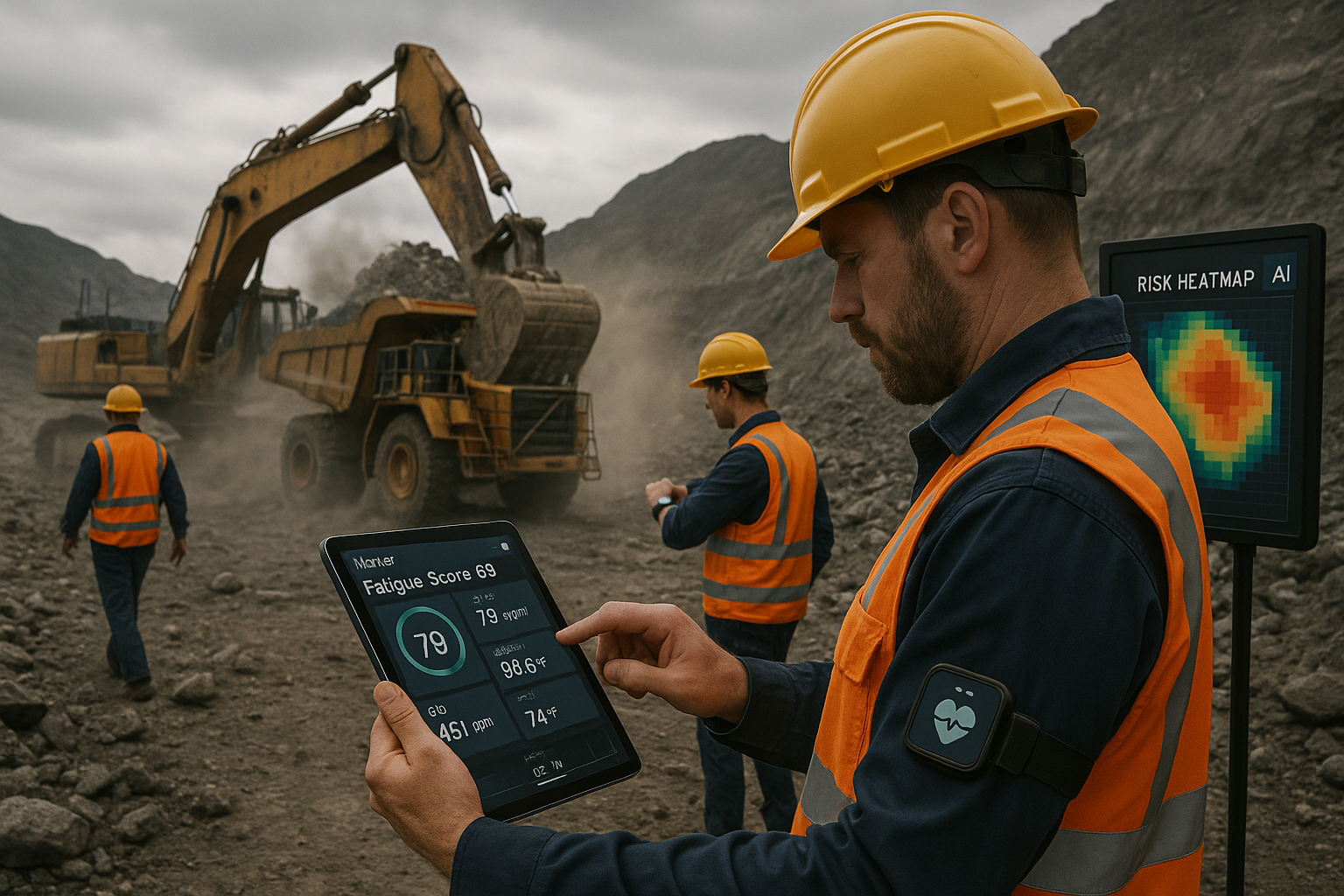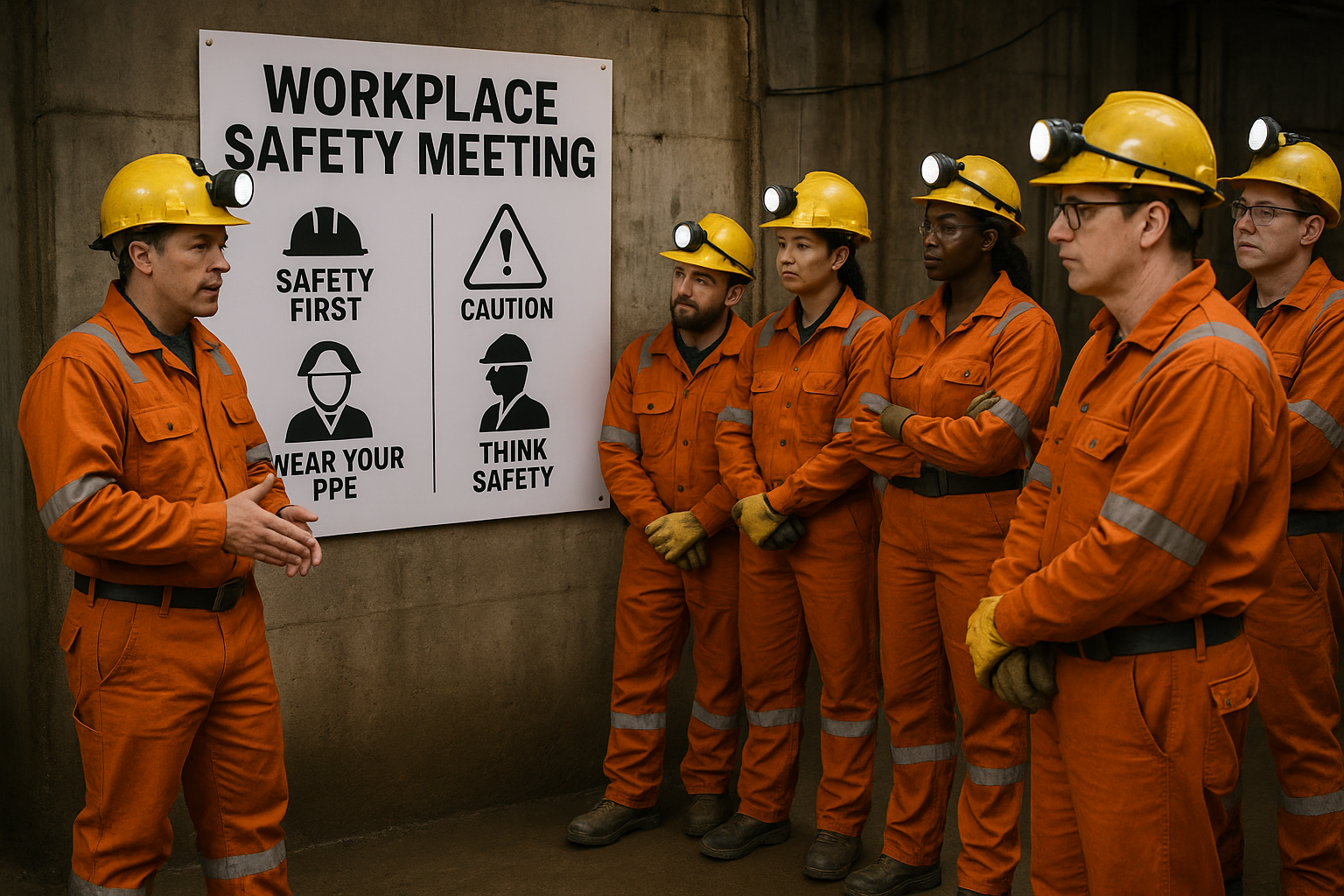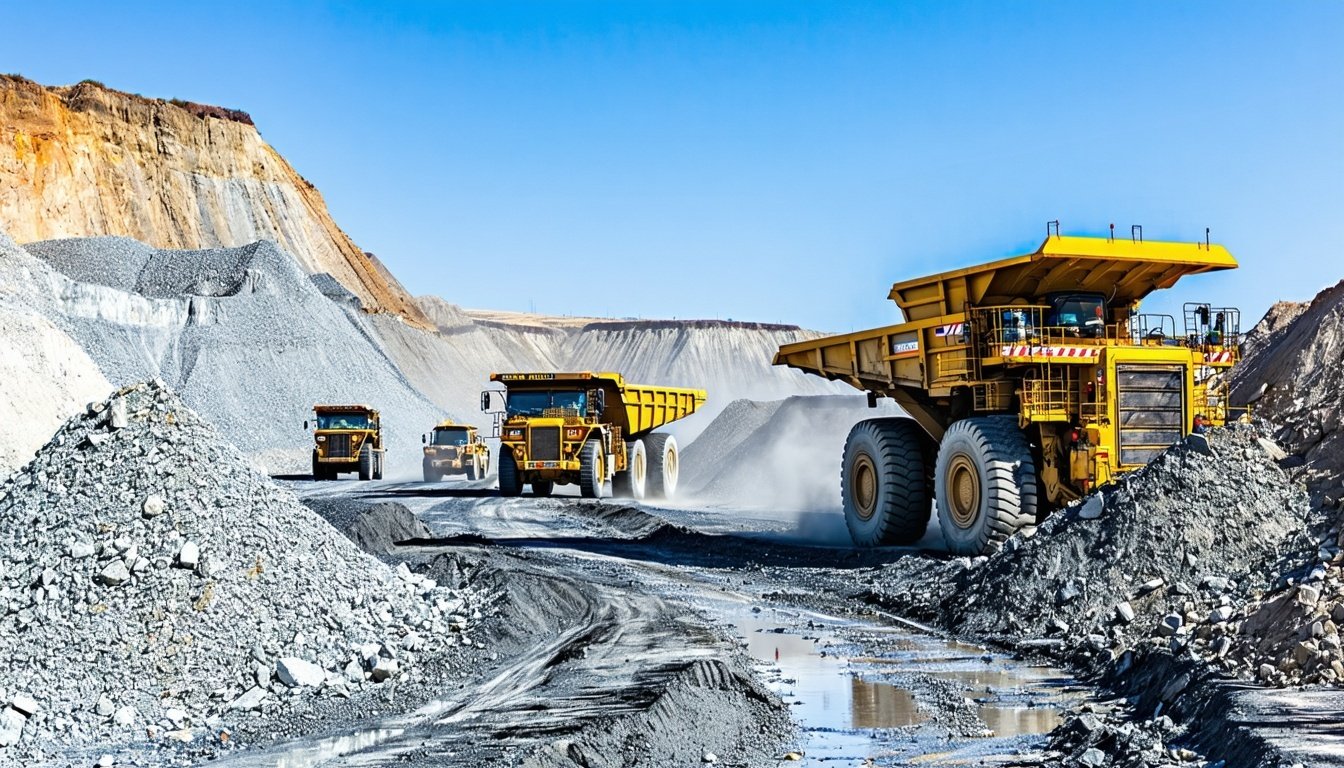The workplace safety landscape is undergoing a fundamental transformation as artificial intelligence reshapes how organizations protect their workers. Advanced algorithms now process vast amounts of safety data in milliseconds, identifying risks that human observers might miss and predicting hazards before they materialize.
This shift from reactive incident management to proactive risk prevention represents more than just technological advancement, it's a complete reimagining of occupational health practices. Safety professionals who once relied solely on historical data and manual observations now have access to real-time insights that can forecast workplace risks with unprecedented accuracy.
For industries where worker fatigue, environmental hazards, and operational risks threaten both human safety and business continuity, AI offers a path to dramatically improved outcomes. The technology's ability to continuously monitor, analyze, and predict creates opportunities to prevent accidents that traditional safety programs might only discover after the fact.
Summary
- AI enables proactive, data-driven safety management.
- Continuous monitoring spots risks—including fatigue—early.
- Predictive models support safer schedules and lower incidents.
- Automated insights improve compliance and cut costs.
- Adoption requires attention to privacy and integration.
- Future tech will boost precision and accessibility for all.
What is AI in Occupational Health?
AI in occupational health represents a sophisticated integration of machine learning algorithms, predictive analytics, and intelligent monitoring systems designed to revolutionize workplace safety management. These technologies work together to create a comprehensive safety ecosystem that operates continuously, analyzing data streams from multiple sources to identify patterns, predict risks, and generate actionable insights that protect workers before incidents occur.
Unlike traditional safety approaches that depend heavily on lagging indicators—incident reports, injury statistics, and post-accident investigations—AI enables a fundamentally different approach to risk management. The technology processes real-time data from wearable devices (like ReadiWatch), environmental sensors, work schedules, and historical safety records to create dynamic risk profiles for individual workers and entire operations. This shift means safety teams can identify a worker approaching dangerous fatigue levels during a night shift, detect equipment showing early signs of failure, or recognize environmental conditions trending toward hazardous thresholds—all before these risks translate into actual incidents.
The scope of AI applications in occupational health extends far beyond simple automation or data collection. Modern AI systems encompass:
- Intelligent Wearables: Devices that monitor vital signs, body temperature, heart rate variability, and movement patterns to assess worker health status and fatigue levels in real-time
- Environmental Monitoring Networks: IoT-enabled sensors throughout facilities that track air quality, noise levels, temperature fluctuations, and chemical exposures with continuous data analysis
- Predictive Fatigue Management: Sophisticated algorithms that analyze sleep patterns, shift schedules, and circadian rhythm data to forecast alertness levels and accident risk up to two weeks in advance
- Computer Vision Systems: AI-powered cameras that detect unsafe behaviors, verify PPE compliance, and identify environmental hazards through continuous video analysis
- Natural Language Processing: Tools that analyze safety reports, near-miss documentation, and worker feedback to identify emerging risk patterns hidden in unstructured text data
These AI-powered systems transform raw data into strategic safety intelligence. For instance, machine learning models can process years of incident data alongside current operational metrics to identify subtle correlations between seemingly unrelated factors, discovering that minor equipment vibration patterns combined with specific weather conditions and shift patterns create a 300% increase in accident risk. This level of insight remains impossible through manual analysis alone, yet becomes routine with properly implemented AI systems.
The integration of AI into occupational health programs also addresses the fundamental challenge of scale in modern safety management. While a safety manager might conduct periodic workplace inspections and review weekly incident reports, AI systems monitor every worker, every piece of equipment, and every environmental factor continuously throughout every shift. This comprehensive coverage ensures that transient risks, those brief moments when multiple factors align to create dangerous conditions, no longer slip through the gaps in traditional safety programs.
How Does AI Transform Traditional Safety Management?
AI revolutionizes safety management by overcoming the inherent delays and limitations of conventional methods. Traditional programs often depend on past data analysis, revealing risks only after they've occurred. This lag not only hampers timely interventions but also restricts the foresight needed to prevent potential hazards.
With AI, a new approach emerges, providing continuous data analysis and foresight that empower safety teams to act swiftly. By integrating data from wearables, sensors, and historical records, AI identifies risks as they develop, offering insights that allow organizations to stay ahead of incidents, rather than chasing after them.
Furthermore, AI systems deliver comprehensive oversight beyond traditional sampling. Instead of assessing a limited number of workers or exposures, AI evaluates each individual's risk profile throughout the entire shift. This ensures that fleeting risks—those brief moments when conditions align dangerously—are promptly identified and managed. Consequently, safety teams evolve from managing incidents to strategically preventing them, transforming the approach to occupational health challenges.
What Are the Key Applications of AI in Workplace Safety?
Real-Time Health Monitoring
AI-driven devices enhance worker safety by tracking physiological and environmental data continuously. These advanced tools assess health indicators such as movement and temperature fluctuations, providing early warnings of potential issues. Sensors placed throughout the facility evaluate air quality and noise, ensuring any anomalies prompt immediate action. Integrating systems that predict fatigue levels allows for proactive measures, maintaining optimal performance and safety.
Predictive Risk Assessment
AI's capability to analyze complex datasets allows for precise risk forecasting. By examining historical data, work patterns, and environmental influences, AI identifies periods of heightened risk. Tools that predict fatigue levels (such as Readi), based on various scheduling and environmental factors enable targeted strategies to mitigate potential dangers. Visualizing these insights through risk maps helps organizations focus prevention efforts effectively.

Automated Hazard Detection
Using cutting-edge vision technology, AI enhances workplace safety by identifying potential risks through video analysis. These systems spot equipment issues early by examining sensor data for unusual patterns. Wearable technology equipped with AI monitors environmental conditions and provides instant alerts. Operating continuously, these systems ensure comprehensive coverage and protection beyond human capability.
What Benefits Does AI Bring to Occupational Health Programs?
AI offers transformative advantages to occupational health programs, elevating safety, efficiency, and compliance. Through advanced analytics, organizations can proactively address potential hazards, significantly reducing incident occurrences. This proactive stance not only safeguards employees but also refines operational processes for peak performance.
Enhanced Safety Outcomes
AI's foresight capabilities enable timely interventions that decrease incident rates. By continuously evaluating data streams, AI systems recognize patterns and irregularities, allowing for immediate action before issues escalate. This capability ensures robust protection for workers, especially in high-risk settings where conventional safety measures may falter.
Improved Operational Efficiency
AI refines work schedules by aligning them with optimal alertness cycles, minimizing errors related to fatigue. This synchronization boosts productivity, ensuring that employees operate at their highest capability, thereby reducing mistakes that could lead to costly incidents. With AI, operational workflows become more streamlined, balancing productivity with worker well-being.
Informed Decision Making
AI empowers safety leaders to make informed decisions based on thorough data analysis. By leveraging advanced models, organizations can anticipate potential challenges and implement preventative strategies tailored to specific risks. This data-driven approach enhances the precision and effectiveness of safety initiatives.
Cost Efficiency
Addressing hazards proactively with AI insights reduces expenses related to compensation claims and downtime. By preventing incidents before they occur, organizations save significantly on costs associated with accidents. This financial prudence underscores AI's role as a strategic asset in workplace safety.
Streamlined Compliance
AI systems autonomously track safety metrics and generate necessary reports, easing the compliance process. These automated systems ensure consistent adherence to safety standards, showcasing due diligence. By maintaining detailed records, AI fosters transparency and accountability in occupational health programs, ensuring continuous alignment with legal requirements.
What Challenges Must You Address When Implementing AI?
Data Privacy and Ethics
Integrating AI into workplace safety involves navigating complex privacy and ethical challenges. Employees may feel uneasy about continuous monitoring, raising concerns about surveillance. To build trust, clear guidelines on data handling are essential, ensuring transparency and fairness in AI operations. Regular audits of AI systems help maintain unbiased decision-making, while clear communication about AI processes fosters acceptance and ethical compliance.
Technical and Integration Challenges
Bringing AI into existing safety frameworks can be technically demanding. Many older systems may not match seamlessly with AI technologies, requiring updates and adjustments. Data quality is critical; inaccuracies can undermine AI effectiveness. Training safety teams to leverage AI without over-reliance enhances their role, while cybersecurity measures must be reinforced to protect against potential vulnerabilities in connected systems.
Organizational Readiness
The shift to AI in safety management requires cultural adaptation. Concerns about technological displacement may cause resistance among staff. Promoting a culture that values data-driven insights involves strategic change management and open dialogue. Balancing AI capabilities with human expertise ensures a harmonious integration. Demonstrating clear ROI and tangible safety benefits is crucial for securing organizational support.
How Can You Successfully Implement AI in Your Safety Program?
Start with Clear Objectives
Define the specific safety issues AI should address, focusing on tangible outcomes like reducing incidents or enhancing compliance. Prioritize areas where AI's predictive capabilities can make a meaningful difference. Implement a phased approach to allow for iterative learning and adaptation.
Build the Right Foundation
Cultivate a reliable data environment by ensuring your systems capture accurate, comprehensive information for AI analysis. Upgrade infrastructure to handle real-time data processing and safeguard information integrity. Develop clear policies around ethical data use and transparency, and create multidisciplinary teams to oversee the implementation.
Engage Your Workforce
Include employees in the development of AI solutions to ensure they address practical workplace challenges. Offer training that highlights AI's role in supporting, not replacing, human decision-making. Foster open dialogue to alleviate concerns about privacy and job impact, and celebrate early successes to demonstrate AI's positive impact on safety.
What Does the Future Hold for AI in Occupational Health?
The future of AI in occupational health promises innovative advancements that will further integrate technology into everyday safety practices. Emerging technologies such as augmented reality (AR) will complement AI, providing immersive safety guidance directly within workers' fields of vision. This seamless integration will allow employees to receive real-time alerts and instructions, enhancing situational awareness and reducing response times to potential hazards.
As technology progresses, fatigue management will become increasingly precise. Enhanced systems will analyze individual sleep patterns and work routines, enabling tailored scheduling that aligns with each worker's natural alertness cycles. This personalization will help minimize fatigue-related risks, optimizing both safety and employee well-being.
AI's capabilities will revolutionize safety programs by anticipating potential issues before they arise. By evaluating diverse datasets and detecting early indicators of risk, AI will support proactive strategies that neutralize threats at their inception. This shift will cultivate a preventative safety culture, enabling organizations to maintain a safe and efficient work environment.
Integration of AI across all areas of occupational health—from recruitment and training to incident analysis and recovery plans—will establish interconnected safety frameworks. These systems will ensure comprehensive oversight of employee health, adapting fluidly to evolving workplace conditions.
As AI tools become more advanced and accessible, smaller organizations will gain access to high-level safety analytics previously limited to large enterprises. This accessibility will promote widespread adoption, allowing businesses of all sizes to enhance their safety protocols, boost operational performance, and foster a resilient workforce.
The intersection of AI and occupational health represents a pivotal moment in workplace safety evolution, where predictive capabilities transform how you protect your workforce from preventable incidents. As these technologies continue to advance, organizations that embrace AI-driven safety solutions position themselves at the forefront of operational excellence and worker wellbeing. We invite you to book a demo to explore how Fatigue Science's predictive fatigue management software can improve safety and productivity, and discover how predictive analytics can revolutionize your approach to workplace safety.
Related Posts
-
How AI Is Shaping the Future of Occupational HealthHow AI is Shaping the Future of Occupational Health
-
Understanding AI in Workplace Safety: A Comprehensive OverviewWorkplace safety has evolved from clipboards and quarterly audits to sophisticated systems that monitor, predict, and prevent...
-
What You Need to Know About Shift Length Laws in US MiningMining operations in the United States play a vital role in the nation's economy, providing essential resources for various...





